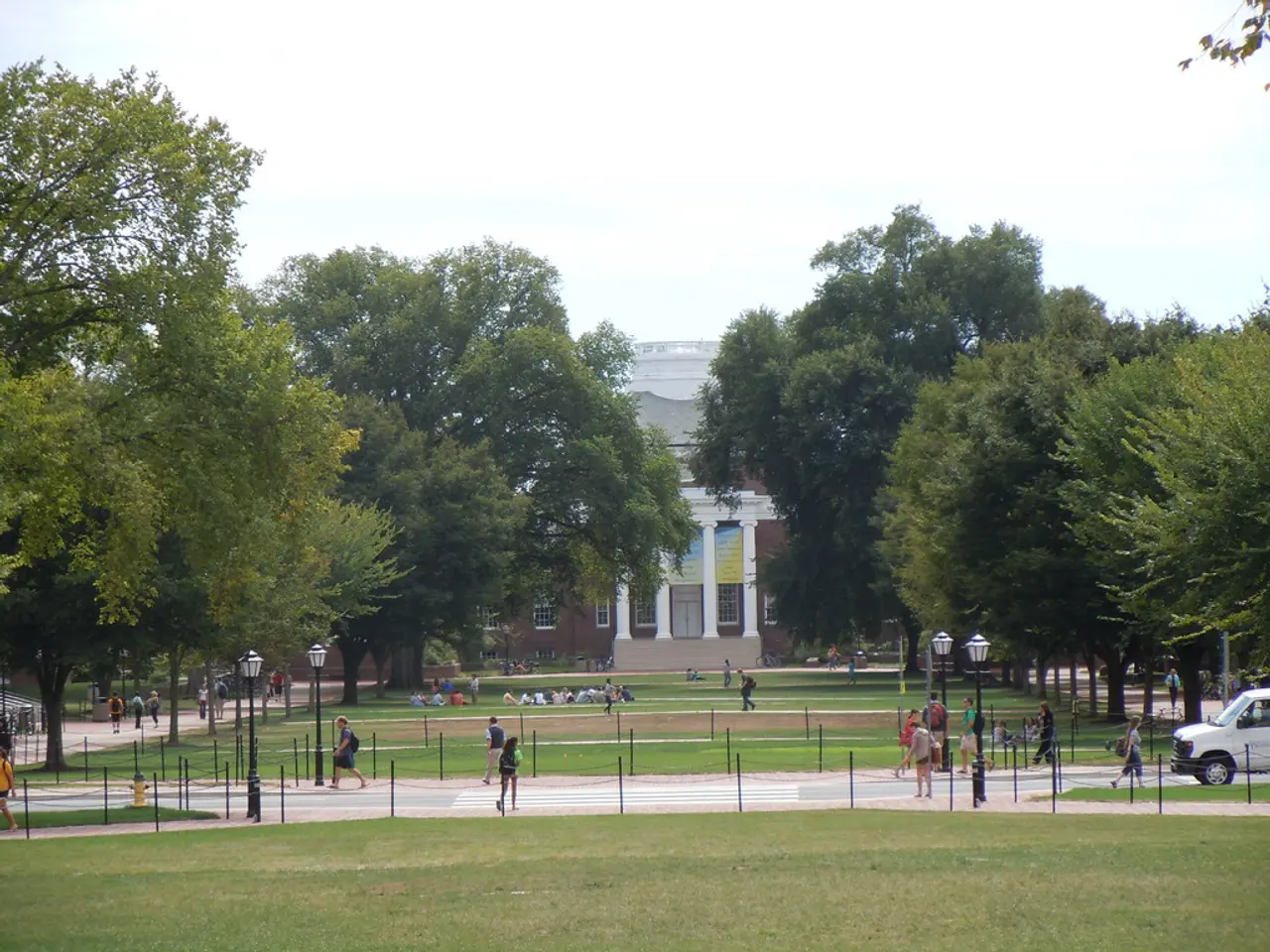Expense Analysis of Urban Education: Financing Strategies for Scholars in Major Cities
Living costs for students in India's metropolitan cities can vary significantly, with monthly expenses ranging from ₹15,000 to ₹40,000. In contrast, tier 2 cities offer a more affordable living environment, with costs typically around 40-60% of metro city expenses.
Major Metropolitan Cities
Mumbai
In Mumbai, the average monthly living cost for students ranges from ₹18,000 to ₹30,000 for a moderate lifestyle, with expenses reaching up to ₹45,000 for a more lavish existence. This includes shared PG accommodation (ranging from ₹10,000 to ₹30,000 depending on location), food (₹3,500 to ₹6,000 for mess or groceries), and transport (₹300 to ₹500).
Delhi
Delhi offers a slightly lower average monthly cost of ₹12,000 to ₹15,000, covering shared or single PG accommodation (ranging from ₹7,500 to ₹23,000 for shared), food (₹3,000 to ₹5,000), transport (₹500 to ₹1,500), utilities, and miscellaneous expenses.
Bangalore
Bangalore's living costs tend to be slightly lower than Mumbai but comparable to other metros due to its strong tech ecosystem. Specific rent data is not consolidated here, but it is generally comparable to Pune and Delhi based on rent trends and wages.
Pune
Pune has an average monthly cost of around ₹20,000 to ₹30,000 for students, including rent (₹8,000 to ₹25,000 depending on the area and type of accommodation), food (₹2,000 to ₹6,000), transport (₹500 to ₹3,000), and utilities.
Tier 2 Cities
Living costs in tier 2 cities are generally lower, offering a more affordable alternative for students. For example, typical rents and living costs in tier 2 cities are substantially lower, reflecting a lower cost of living baseline.
Comparison Table
| City | Average Monthly Student Cost (INR) | Notes | |---------------|-----------------------------------|-----------------------------------------| | Mumbai | ₹18,000 – ₹30,000 (moderate) | Highest costs, expensive accommodation | | Delhi | ₹12,000 – ₹15,000 | Moderate costs, variable rent | | Bangalore | ₹15,000 – ₹25,000* | Slightly lower than Mumbai | | Pune | ₹20,000 – ₹30,000 | Affordable relative to Mumbai, Delhi | | Tier 2 Cities | ~₹8,000 – ₹15,000 (estimated) | Much lower rent and food costs |
*Bangalore data is less precise but generally comparable to Pune and Delhi based on rent trends and wages.
This cost breakdown includes rent, food, transportation, and utilities essential for students living independently. The detailed breakdown of expenses for each city can be found in the following sections.
In conclusion, the cost of living for students varies significantly across major Indian cities. While metropolitan cities like Mumbai and Delhi offer quality education and better career opportunities, they come with a higher price tag. Tier 2 cities provide a more affordable alternative, making them an attractive option for students seeking a more budget-friendly lifestyle.
- For students in Mumbai, a moderate lifestyle might require a monthly budget of around ₹18,000 to ₹30,000, which primarily covers accommodation, food, transport, and utilities.
- Delhi offers a slightly more budget-friendly living environment for students, with average monthly costs ranging from ₹12,000 to ₹15,000, covering expenses such as rent, food, transport, utilities, and miscellaneous costs.
- Personal financial management and budgeting are crucial for students in both metropolitan cities like Mumbai and Delhi, as well as in tier 2 cities, to ensure they make the most of their education-and-self-development opportunities while managing their personal-finance needs.
- The high cost of living in metropolitan cities like Mumbai and Delhi presents an opportunity for businesses to cater to the specific needs of students, offering lifestyle choices that balance affordable costs and quality services.
- Cultural differences and opportunities for cultural immersion are universal aspects of student life in both metropolitan cities like Bangalore and tier 2 cities, enhancing their overall learning experiences.




